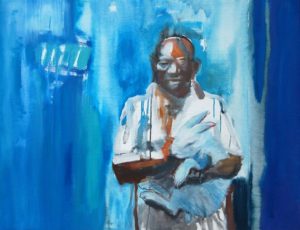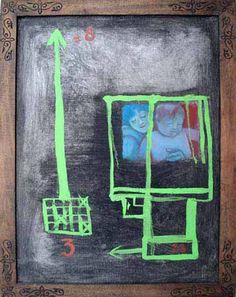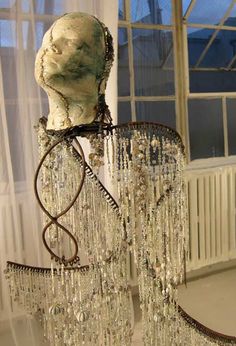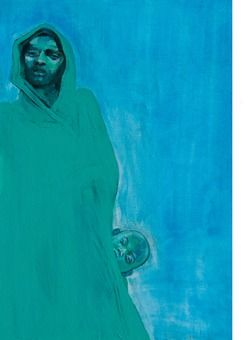
Pascale Monnin
About:
Pascale Monnin came of age in Haiti, the island on which a mix of descendants and immigrants have produced a culture wherein the original place of Ayizan, the god of commerce and most important to Benin (guardian of the marketplace at Abomey) where Vodou, matrix of Haitian culture, originates, was given to Erzulie, goddess of beauty (as Erzulie Freda) but also of fight (as Erzulie Dantor,) and patroness of Haitians.
The Vodou song to Erzulie Freda says it all:
Erzulie O, this house needs to be cleansed
Erzulie O, this house needs to be cleansed

Her art is a mirror to her existence. Most often figuratively, it expresses the wide-eyed urbanite optimism that allows one to continue to live in spite of the bad news that one hears and sees, and that television, radio, and writing often brings, where beauty is ever important. She offers us symbols of this culture, of her faith in Haiti and the identity that living it has procured her, as paintings and as sculpture that express much more than survival; they show us thriving as a Haitian person in the cosmos, in love with one’s children, surroundings, history and future prospects.

Monnin’s art exists within the unique dialectic of Haitian art. It’s a weird one, where the rich and the poor fight, though not publically, for what will be culturally significant Haitian art, vodou art or petit-bourgeois portraits. Saint Soley vs. Tete de L’eau (wherein there is public respect.) Her art is petit-bourgeois art, informed by the best education that the island has to offer, as the daughter of Michel Monnin, one of Haiti’s great art dealers if not the greatest (Galerie Monnin might just be Haiti’s best contemporary art gallery.)

Her Angel of Resurrection might be the single most important piece of Haitian art produced in the 21st century, because it accomplishes the signification of (petit-bourgeois) Haitian optimism from a Haitian person perspective that on other art has. It is made of pottery, raku glaze, wire, pearl, and jewels.

About her art, her bio on the Galerie Monnin states that “these characters, these animals which live in my paintings are a little like gods, spirits of a mythology that belong to me. They whisper something that I cannot completely grasp, they speak of the living, of the dead. They speak about me, but their language is coded and I can’t quite understand them. Fellow travelers they are at times friendly, terrible, defenders or manipulators, they send back in mirror image wanderings, poetry and doubt.”
Born in Port-au-Prince March, 1974. She has exhibited in Haiti, France, the US, Dominican Republic, Switzerland, amongst other countries.
